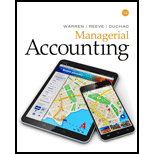
(a)
Profit margin: This ratio gauges the operating profitability by quantifying the amount of income earned from business operations from the sales generated.
Formula of profit margin:
Investment turnover: This ratio gauges the operating efficiency by quantifying the amount of sales generated from the assets invested.
Formula of investment turnover:
Formula of ROI according to Dupont formula:
Return on investment of MN Segment, PR Segment, SE Segment, and CP Segment, using Dupont formula
(a)
Explanation of Solution
1)
Determine ROI of MN Segment, if income from operations is $7,321,000,000, sales are $21,152,000,000, and assets invested are $29,887,000,000.
2)
Determine ROI of PR Segment, if income from operations is $2,663,000,000, sales are $15,099,000,000, and assets invested are $23,335,000,000.
3)
Determine ROI of SE Segment, if income from operations is $1,549,000,000, sales are $6,988,000,000, and assets invested are $15,555,000,000.
4)
Determine ROI of CP Segment, if income from operations is $1,356,000,000, sales are $4,274,000,000, and assets invested are $7,526,000,000.
(b)
To explain: The differences in profit margin, investment turnover, and return on investment of MN Segment, PR Segment, SE Segment, and CP Segment.
(b)
Explanation of Solution
The following are the differences in profit margin, investment turnover, and return on investment of MN Segment, PR Segment, SE Segment, and CP Segment:
- Profit margin and investment turnover of MN Segment are high comparably, with 34.6%, and 0.71 and producing high ROI of 24.6%.
- Investment turnover of SE Segment is very low comparably and produces low ROI of 10.2%.
- CP Segment stands in the second place with 31.7% profit margin and produces ROI of 18.1%.
- PR Segment stands in the third place with 0.65 investment turnover and produces ROI of 11.4%.
Want to see more full solutions like this?
Chapter 9 Solutions
Managerial Accounting, Loose-leaf Version
- The variable expense per unit isarrow_forwardA firm's _ is a measure of its competitive advantage calculated using information from a firm's published profit and loss and balance sheet statements. A) strategic performance B) economic performance C) accounting performance D) sustainable performancearrow_forwardCan you solve this general accounting problem with appropriate steps and explanations?arrow_forward
 Managerial AccountingAccountingISBN:9781337912020Author:Carl Warren, Ph.d. Cma William B. TaylerPublisher:South-Western College PubPrinciples of Accounting Volume 2AccountingISBN:9781947172609Author:OpenStaxPublisher:OpenStax College
Managerial AccountingAccountingISBN:9781337912020Author:Carl Warren, Ph.d. Cma William B. TaylerPublisher:South-Western College PubPrinciples of Accounting Volume 2AccountingISBN:9781947172609Author:OpenStaxPublisher:OpenStax College Managerial Accounting: The Cornerstone of Busines...AccountingISBN:9781337115773Author:Maryanne M. Mowen, Don R. Hansen, Dan L. HeitgerPublisher:Cengage Learning
Managerial Accounting: The Cornerstone of Busines...AccountingISBN:9781337115773Author:Maryanne M. Mowen, Don R. Hansen, Dan L. HeitgerPublisher:Cengage Learning Financial And Managerial AccountingAccountingISBN:9781337902663Author:WARREN, Carl S.Publisher:Cengage Learning,
Financial And Managerial AccountingAccountingISBN:9781337902663Author:WARREN, Carl S.Publisher:Cengage Learning,




